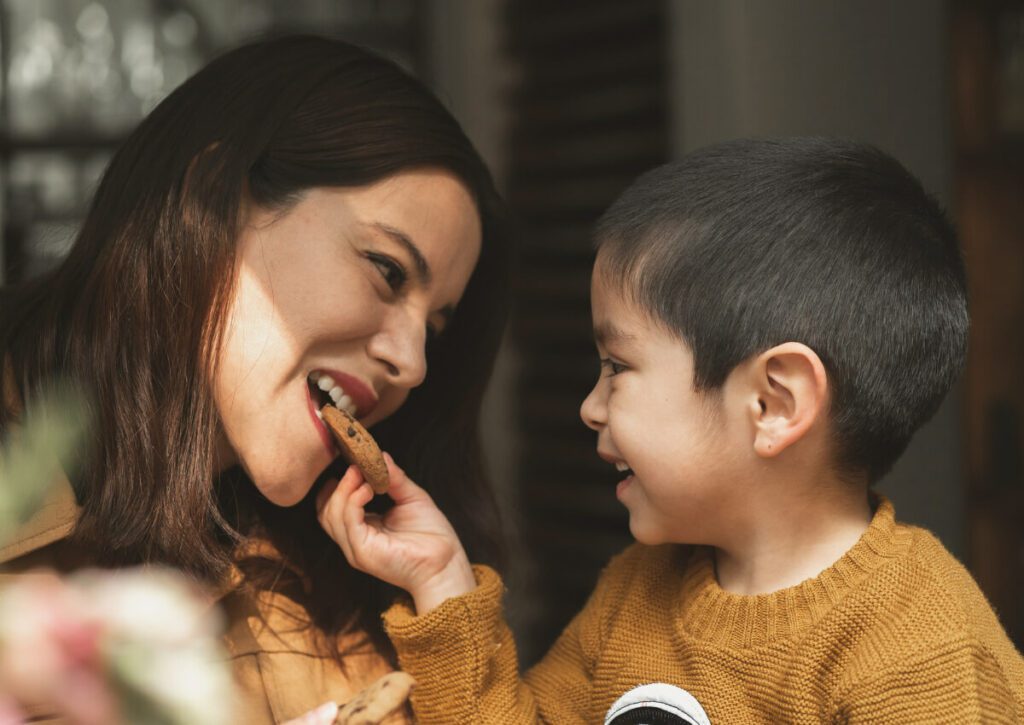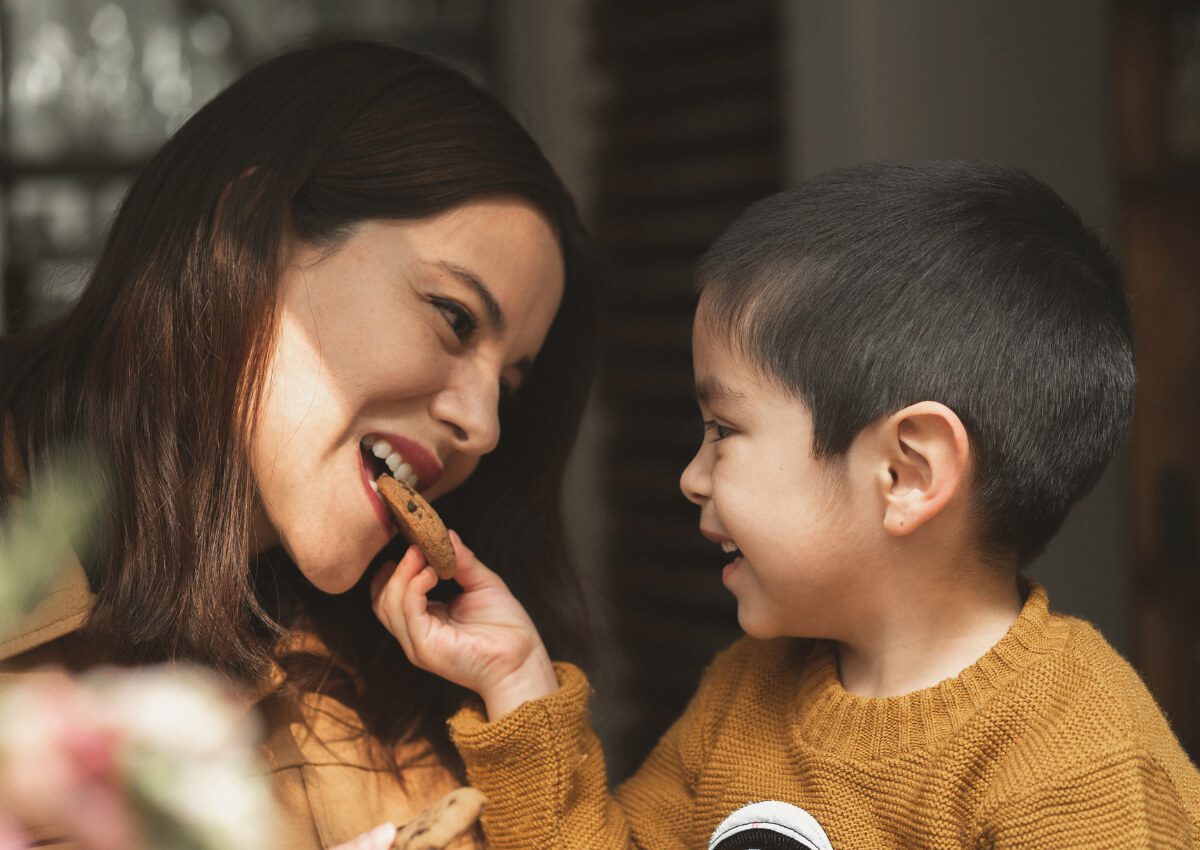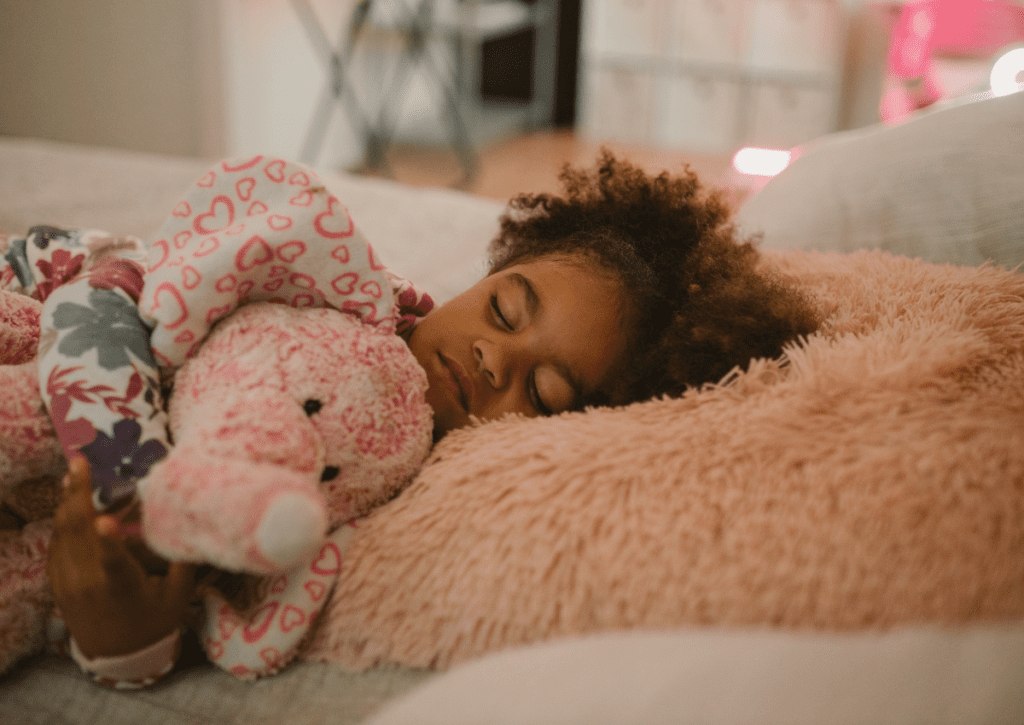
As speech-language sciences progress, many are learning about how speech processes correlate with how autistic adults and children communicate with others. A term that is becoming better understood in the speech-language community is Gestalt Language Processing (GLP), or Natural Language Acquisition. In turn, this term has become increasingly used in the autism community.
You may have heard of Gestalt Language Processing, but only understand part of it, or none of it at all. To help our parents learn more about GLP, in the summer of 2023 Amanda Tompkins, MS, CCC-SLP, from our former speech team, presented the basics of Gestalt Language Processing. Read on to discover how GLP relates to the work we do in helping our clients learn to communicate – whether through Applied Behavior Analysis (ABA) Therapy, Speech Therapy, or both.
Learning to Communicate
In the world of language and speech learning, there are two main ways that individuals learn to develop language. This starts at the time they begin communicating. From a Speech-Language Pathologist perspective, every individual naturally learns speech either through Analytical Language Processing, or Gestalt Language Processing. And many people learn language through a mixture of both.
Gestalt Language Processing is common and prevalent in those with autism. This is due to how aspects of echolalia, “scripting”, memorization, and melody, in addition to other components, play into the speech learning process in autistic individuals.
We all want to be understood- and not just understood, but ideally, well understood. That is why, especially when it comes to language and individuals with autism, it is so important to identify the way the child learns and acquires language. This helps us to effectively support growth in their communication skills in a way that resonates with them.
What is Gestalt Language Processing?
Gestalt Language Processing, as defined by AssistiveWare, is “a form of language development that starts with whole memorized phrases to single words.” This means that the child learns the meaning of individual words through phrases, or “chunks”, that include that word, as opposed to the word itself. GLP was “named and described by linguist Ann Peters and taken up by SLP scientist Barry Prizant and colleagues,” according to The Informed SLP. It has been around since the 1970s.
Gestalt Language Learning can be confusing and difficult to navigate due to its indirect and non-literal nature. This is especially true when it comes to those who have trouble communicating in the first place. The vocalizations and physical actions that sprout from GLP are typically not to be taken literally. But they are usually an attempt by the individual to communicate with others, whether it is easily comprehensible or not.
For example, a child may frequently hear the phrase “2 more minutes!” when it is almost time to move onto another activity or stop their current activity. Now, anytime the child is anticipating anything, they say “2 more minutes!”. In this case, the child isn’t able to make the connection between the phrase and the context it is appropriately used in.
Another example is that of a child who gets frequent ear infections always hearing the phrase, “does your ear hurt?”. The child soon begins to repeat the questioning phrase any time they feel physical pain in their body. This happens because that is the phrase their mind has paired with the specific sensory feeling of pain.
How to Know if Your Child is a Gestalt Language Processor
GLPs possess distinct differences in how they communicate as compared to Analytical Language Processors. There is a chance that your child is a GLP if they:
- Use long scripts of language
- Have immediate or delayed echolalia
- Have unintelligible strings of language
- Have rich intonation
- Use single words
- Reverse pronouns
It is important to note that your child can be a GLP even if they use partial or full sentences. We are even able to identify some GLPs that have minimal spoken language through their love and interest in repeated strings of melody and intonation.
Discovering your child is a GLP can be an incredibly exciting and validating moment. Once you understand how your child learns language, you can begin taking steps to communicate with them in a way that’s meaningful to them. From there, you can then help them to communicate better with the environment around them.
The 4 Stages of Gestalt Language Processing Development
There are 4 notable stages in the development of GLP. Knowing what stage your child is demonstrating at a given time can help navigate what to focus on teaching. The first two stages in GLP development precede what is typically seen with Analytical Language Processing. The stages are:
- Echolalia Full Gestalt – consists of, but is not limited to, lengthy sentences, single words, or strings of sounds and melodies that sound the same every time.
- Mitigating – the combining of two gestalts (scripts).
- Freeing – the breaking free of single words and/or making a new combination of words.
- Combining – the use of single words to create basic 2-3 words sentences.
Many children are GLPs and do not require support due to how quickly they move through the stages. Many children on the spectrum need support because they may be “stuck” in Stage 1. Services like ABA and Speech Therapy can help children move through these stages to better communicate their wants and needs.
Becoming a Detective of Your Child’s Communication
Many times, it may not be clear to others what GLPs are attempting to communicate. Many of the scripts or actions that are performed by GLPs typically are derived from a form of media that has resonated, or stuck with, the child. These phrases are specific and personal to each individual and could be scenes or phrases from people, shows, movies, online videos, commercials, etc.
In the child’s head, these “scripts” are sometimes paired with a meaning. If the meaning is not obvious, it can be challenging to make connections about what the child is trying to communicate, if anything. This is why it’s important to pay attention and “become a detective” about where your child is obtaining each script and what the context of it is. Using this method, it becomes easier to draw possible conclusions about what is being communicated, which opens doors to how educators and parents can help make the language more functional.
Thoughts to Consider when Communicating with Gestalt Language Processors
With these things in mind, we have some general thoughts to consider when it comes to communicating with a GLP:
- Acknowledge that the script is likely an attempt to communicate, even if you don’t know what it means.
- Understand that gestalts can also be non-verbal (scripts can be played out through actions and gestures).
- Taking a conversational turn can be useful. Nodding, smiling, and/or repeating what the child is saying shows that you are engaged and interested.
- Think about taking notes and writing down what words and phrases the child is saying. Then, reference it later to help make connections about what the child may be trying to communicate. This will be a huge help in your “detective” work.
When you think you have discovered what your GLP is saying, it is essential that you acknowledge the meaning you have discovered. You can then practice, with the help of your child’s therapy team, modeling developmentally appropriate language during teachable moments that may arise.
Bridging the Gap between ABA Therapy and Gestalt Language Processing
While ABA Therapy doesn’t focus on identifying and analyzing GLP, the two work harmoniously in many ways. ABA meets GLPs where they’re at to create learning opportunities from what resonates with the child, said Dr. Jennifer Thomas, BCBA and Director of Clinical Standards at Healing Haven.
Thomas gives the example of scripts that are identified within a specific context, or over several contexts, being used to “signal” (referred to as “SD” in ABA) an event or change in events. “’Let’s go,’ especially if always said in the same tone of voice, can be used to signal it’s time to leave the house. The adult can use the scripts the child uses to reinforce the context it fits into and the behavior that goes with it, so it becomes more meaningful and serves to communicate more effectively.”
Thomas noted that, aside from vocalizations, actions or gestures can also be part of a context and serve a purpose. She explained that paying attention to the pattern of occurring actions can help understand the function of a behavior. This creates an opportunity to reinforce the behavior with vocal communication.
“BCBAs often will look to identify the function of a behavior, including scripts, to develop a plan for integrating the script into the child’s world. If the function is attention, for example, the BCBA may teach more scripts so the child can gain attention in a meaningful and consistent way,” said Thomas.
Educational Resources on Gestalt Language Processing
Aside from what we’ve provided above, there are many resources available to help parents, teachers, and caretakers understand Gestalt Language Processing. A few of the ones we like best are the following books:
- Uniquely Human: A Different Way of Seeing Autism by Barry M. Prizant, PhD
- Natural Language Acquisition on the Autism Spectrum by Marge Blanc, M.A., CCC-SLP
- Gestalt Language Processing Handbook by Kathryn Arnold
In addition to these, And Next Comes L has a variety of resources for parents to turn to for information about Gestalt Language and Echolalia.
We hope this post has been helpful to anyone learning about Gestalt Language Processing. Please feel free to comment or share this post with others in your community. And reach out to us if you are looking for a speech or ABA therapy team who can support your child’s unique communication needs and development!


















